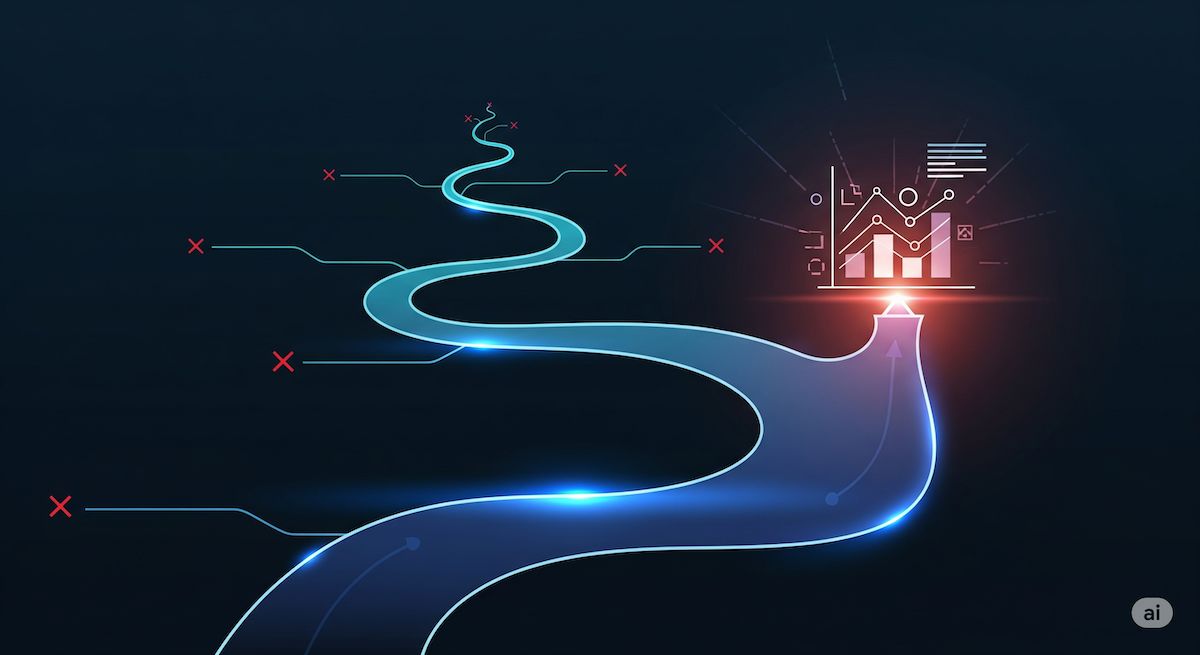
This is a follow-up to the original blog post in March 2020: Conduct Life Design Interviews: How Life Design Interviews Can Help You Find Your Passion.
Five Years Later: The Winding Path Continues
It’s been over five years since I wrote the first part of this article about conducting life design interviews. Rereading that post today is an interesting experience, and it felt like the right time for a follow-up.
The good news is that most of what I wrote back then still holds true. The process works. But I wanted to add a little more flavor after five years of walking the path that process helped me discover, a path that led me to places I never initially considered or thought I’d revisit.
The Starting Point: Ruling Things Out
When I first started this process, I had a list of potential job titles that make me chuckle a little now: Customer Success Manager, Technical Support Engineer, Developer Advocate, and Product/Project Manager. The interviews I conducted were invaluable, primarily because they convinced me that none of these were quite the right fit.
- Customer Success Manager & Developer Advocate: These roles were a bit too forward-facing. As a supreme introvert, I realized that much direct, constant interaction would drain me and lead to burnout again.
- Technical Support Engineer: This was closer, but it felt like a parallel track to the software engineering path I was already on and wanted, at the time, to get out of. It was too broad and didn’t feel like the significant change I was looking for.
- Product/Project Manager: I thought about this or a Technical Project Manager for a bit longer than the rest after the interviews, but quickly realized that it was more of an extrovert’s job and countless meetings, and not something I was interested in, yet.
The real power of these conversations wasn’t in finding a “yes,” but in confidently reaching a “no.”
The Pivot: A Nudge from a Friend
The breakthrough came from a couple of friends who, in that wonderful way friends sometimes do, knew me better than I knew myself. They suggested I look into becoming a Data Analyst.
My biggest immediate fear was the math. I had gone through Calculus I and 2 in undergrad, but I quickly forgot it after the exam and lack of use throughout the years. I also knew I should never have left it, and wanted to get back into it. So, I took the leap and enrolled in Springboard’s Data Science Bootcamp in 2020 (right when the pandemic hit, yay!).
Regarding the bootcamp, I enjoyed the classes, and they put me on the right trajectory. It did not teach me the math, but was a gentle reintroduction into probability and statistics and a researcher’s mindset. I knew it was a bootcamp, not a golden ticket to the “fancy data scientist job” I might have been dreaming of, but it gave me the confidence that I could handle the work. I navigated my own job search, so I can’t speak to their job guarantee promises, but the curriculum itself was valuable for me.
The Realization: From Startup Life to a Deeper Calling
Before I even graduated from the bootcamp, I landed a contract-to-hire, full-time job at a small healthcare analytics startup. That four-year firehose of experience was a crucible, taking me through several different roles and dramatically expanding my knowledge.
It was there that I had two major realizations:
- I was fully capable of being a Senior Software Engineer.
- Despite that, what I was truly passionate about was going deeper into data analysis, mathematics, and machine learning.
Just as this conviction was solidifying, the world of large language models exploded, which only accelerated my desire. I knew I wanted to not just use these tools, but to understand how to build them. I had too many “unknown unknowns,” and the only way to fill those gaps was to go back to the fundamentals.
The bootcamp was the perfect way to quickly gain practical skills and confirm my interest in the field without the commitment of a full degree. It gave me the confidence to land my first data-heavy role that I wouldn’t have been able to do otherwise. However, at my job, I realized that to build the complex machine learning models I was fascinated by, I needed a deeper, foundational understanding of statistics and theory—the ‘why’ behind the ‘how’.
The Next Chapter: Grad School and What’s Next
This realization led me to apply to Georgia Tech’s Online Master of Science in Analytics (OMSA). For the last year, I’ve been a full-time student, and I’m now about halfway through the program (as of Fall 2025). It has been challenging, rewarding, and has confirmed that I’m on the right path.
Conclusion: It All Works
So, what’s the takeaway five years later? The process works. Its most significant strength is in helping you understand not just what you want to do, but what you definitely do not want to do. And that is incredibly valuable.
My original advice stands, and I can’t stress it enough:
- Keep talking to people. Curiosity is your best tool.
- Be respectful of their time. Be quick, be prepared, and be on target with your questions.
- Always send a thank-you note.
- Be grateful. Someone giving you their time is a gift. In a world where nobody has time, it’s a precious commodity.
Thank you for reading, and I hope this helps you build a fulfilling career through curiosity and experimentation!